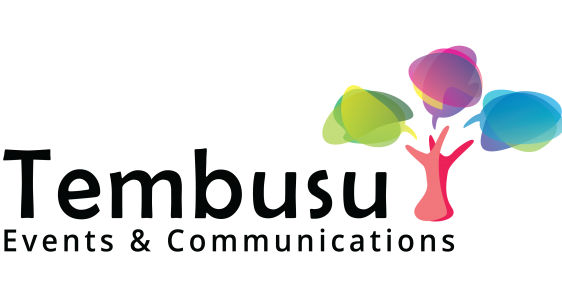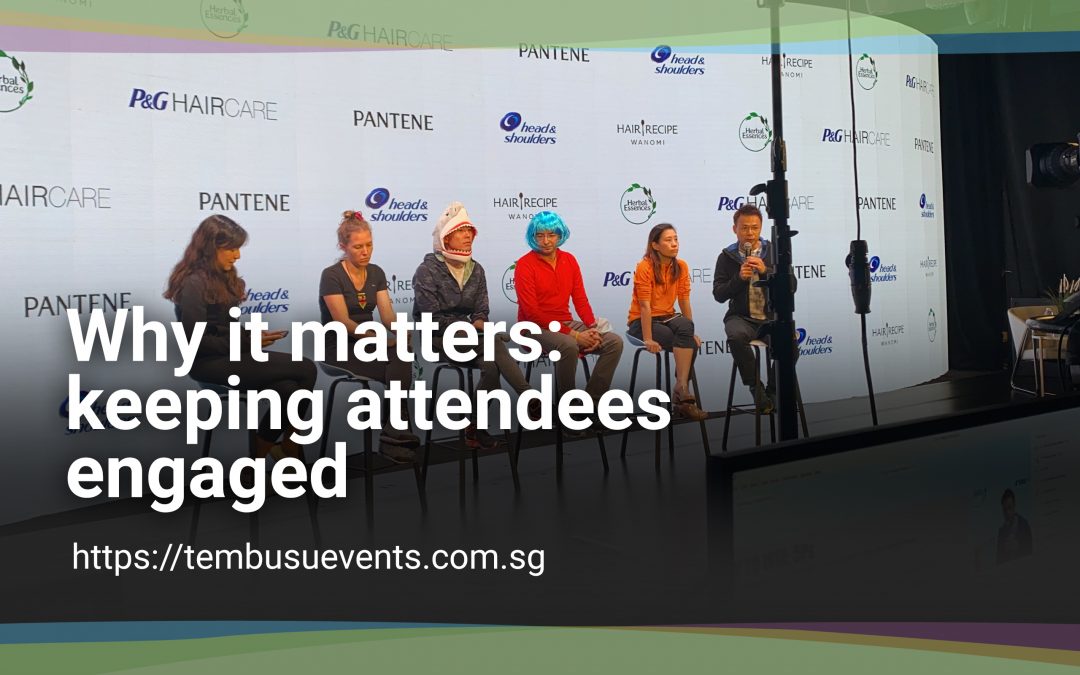One of the common pain points for virtual event company would be to keep attendees engaged during the event itself. Theoretically, having someone’s full attention in a dedicated space sounds simple enough to do but in reality, organisers have to wrestle with diverged attention and multiple screen tabs.
Keeping attendees engaged is not just because resources have been invested into executing the event, but rather it could prove useful and gratifying for the business’s ROI in the long-run.
Higher participation rate is an indicator that the content rolled out during the virtual events is engaging and gels well with the attendees. In turn, this translates into positive rapport building with the brand and attendees are more likely to trust and associate with the brand, thereby being converted into quality leads and could return sales in the future.
What are some of the pros and cons of virtual events?
The need for virtual events was propelled by the new normal. As much of life and traditional work cultures have found ways to digitalise in order to survive, change here may not always be a bane.
Ideally, businesses would choose to engage with their clients face to face through trade shows, conferences and off-site meetings but due to the constraints of social distancing, that may not be happening anytime soon. There are, however, several upsides to virtual events company that might actually propel the business further than the fiscal year might have planned for.
Unlike physical engagements, The virtual events company recommend to go virtual which account for lower costs as traditional overheads like set-up, event rental and administrative fee are no longer part of the budget sheet. To top it all off, virtual events can be leveraged all year round to increase brand exposure, potentially tapping into markets and demographic groups that were previously hard to reach.
But of course, unlike physical events, virtual events could downplay brand association and be less likely to stick with new clients as forming connections and rapport through a screen can be hard to keep up. One of the most pressing concerns for event organisers is unsurprisingly, strategizing to keep their attendees attention on the right screen as it is common for attendees to be multitasking and distracted

Have a theme
A commonly used strategy to keep attendees engaged during virtual events is to suggest a theme in the form of a prop or a dress code. This is cost-effective and generates excitement ahead of the event. It is especially useful when the event aims to generate high participant interactivity as it sets a casual tone that’s relaxed and comfortable enough for effective networking.
Pulling this off is relatively hassle-free as well, start off with the context of the event and let it lead from there. For example, If the event was a dedicated networking session for wine lovers, getting the participants to bring their own bottle or to be dressed in a shade of their wine preference provides great team camaraderie and conversation starters.
Remember, setting a theme is all about creativity and one’s imagination so do think out of box.

Timed workouts and stretches
One of the perils of running virtual events would include the participants being glued to their chairs all day and the lack of physical activity, however little can cause some with shorter attention spans to grow weary and fidgety. To prevent attendees from exiting the virtual events altogether, The virtual events company incorporating mini workouts every hour or so will be fruitful on a long day.
Timed mindful moments such as yoga, stretches and even breathing exercises can help to refresh a participant’s attention span and increase their focus. To better facilitate these mini workouts, inform the participants ahead of time to be in loose or comfortable clothing and get ready a yoga mat nearby. These little preparations can smoothen facilitation and save a lot of time, thereby ending the event punctually.
Free merchandise
Event swag usually comes in a goodie bag upon registration at physical events, however, for virtual events such merchandise is mailed out a week or so before the actual event date. Event merchandise gives attendees a glimpse of what to expect during the event and informative essentials for them to get their bearings straight for the whole day.
Commonly, event swag is also inclusive of company t-shirts, lanyards and other forms of identity that can be easily identified from afar. This is to maintain unity among attendees and of course to create hype and generate chatter. Such merchandise makes for great marketing materials as attendees can spread the word on social media platforms to generate more attention for the event. They can indirectly promote brands featured at the event itself and help to generate following and sales.
Live Interactive polls
Interactive polls such as Kahoot, Mentimeter and Slido are great platforms to conduct live polls during streams and meetings. The driving factor for conducting these polls is to check on the participants attention and whether the information presented can be easily absorbed. Polls with interesting content can sometimes elicit controversial and juicy responses that form points of conversation and generate buzz among attendees.
Such tools are great for virtual events where participants are from industries that are heavy on education, healthcare and technology etc. As these sectors are heavily banked on industry-specific knowledge, new information gathered by the participants during the event can be easily cross-checked with a poll. Of course, for the poll to be effective, installing a reward system can be helpful. By rewarding participant with an event related product or some kind of a perk, people are more likely to note down key takeaways and retain the information. Thereby allowing the event to add more value.
In-app games with rewards
Virtual events like E-commerce shopping events are getting more popular as they feature interactive reward systems for consumers to redeem on the spot. These e-commerce platforms usually have animated in-app games where shoppers can convert game scores into monetary rewards and vouchers that they can redeem while checking out their carts.
Game scores can also be shared on social media platforms such as Twitter, Weibo and Instagram. Where it generates even more hype and baits friends and family to the e-commerce app and indirectly generates more sales for the business. If the virtual event in question is a live streaming event, the competitive tone it sets for shoppers can boost engagement on the platform as people would hustle hard for freebies. It is a healthy precedent to set as it generates more anticipation for the next livestream.
Preview exclusive content
Virtual events helmed by the arts and entertainment sectors include behind-the-scenes livestreams of movie premieres, museum tours and even fashion shows. Exclusive content should act as a marketing incentive to increase the number of sign ups and create buzz before the event. Previewing the content itself during the virtual event should be displayed intermittently to bait the audience into staying for the entire duration of the event.
Breakout rooms with networking opportunities
In physical events, networking opportunities run rife and do not need actual facilitation by crew members as professionals would instinctively mingle amongst themselves and exchange name cards. Unfortunately, that might not be happening anytime soon in this new-normal. Facilitation by event staff for breakout sessions can help keep the flow going.
Before the event commences, it is important to allocate a certain number of attendees to each breakout room and take note of the demographic of the people in each session. It is advisable to have a diverse group of attendees in each breakout room to keep the conversation varied and objective.
Time each breakout session and once the time is up, rotate attendees so that everyone has a chance to meet at least 70% of the participants in attendance and form as many future networking opportunities as possible.
High production value content
Video or livestream content that is high in production value is more than its resolution and flow. It is about the quality of its storytelling and the narrative it is trying to convey. For example, a keynote speaker at a virtual conference could be trying to highlight the issue with delivering clean water to third world countries. Just a speech alone would not capture the attention of everyone in audience and might even put a good 10% to sleep. However, illustrating a point with compelling 3D graphics done by virtual reality software could capture an extra 20% of the attendees attention.
Moreover, everyone has different learning styles and visual learners are better able to retain information with pictures. By including augmented reality or virtual reality softwares, virtual events company can increase audience engagement and increase overall event satisfaction. Moreover, content featuring high production value are seen as much more credible sources of information and creates trust with the audience. Have a discussion with us for more details !









Recent Comments